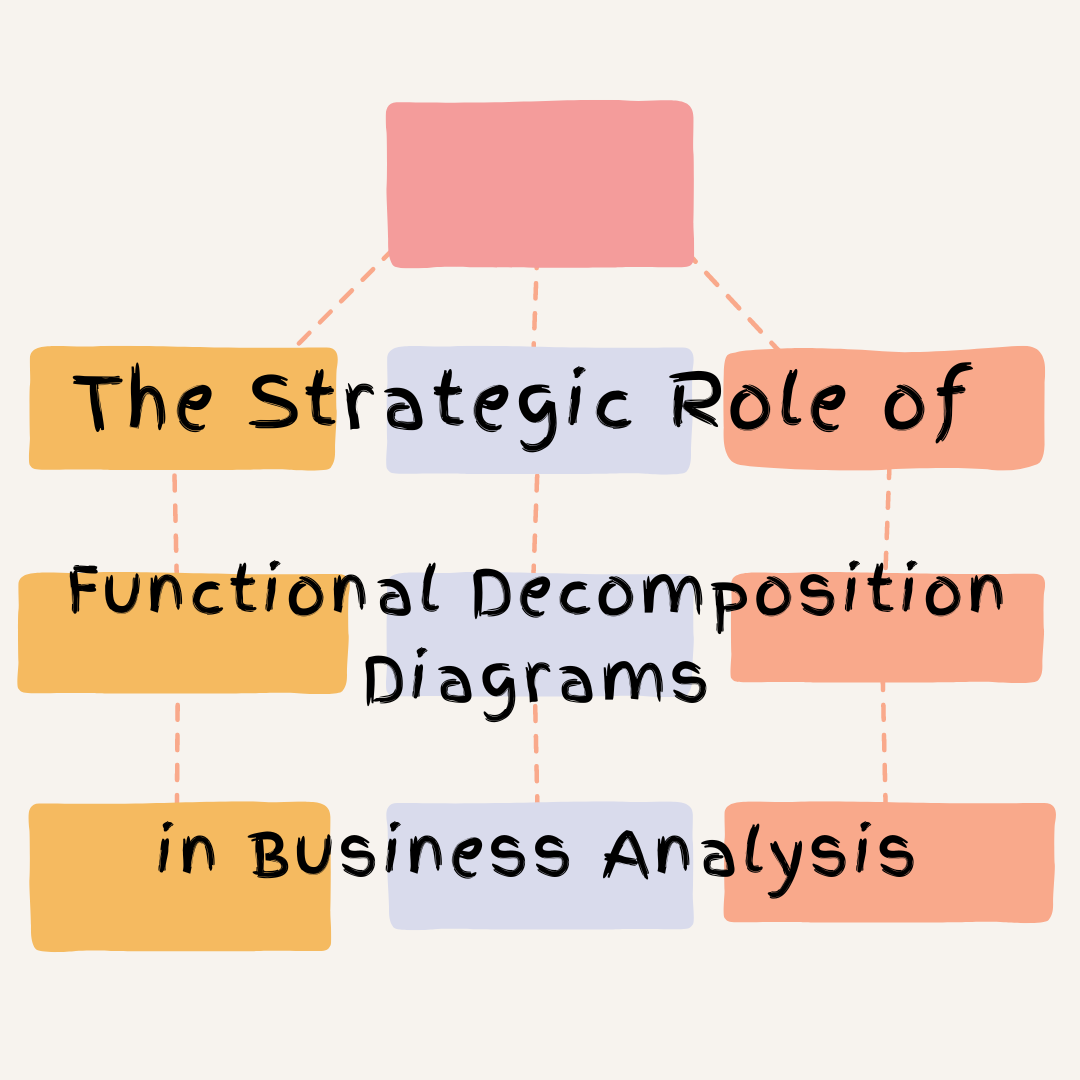The Strategic Role of Functional Decomposition Diagrams in Business Analysis
In the intricate world of project development, both in Agile and Waterfall frameworks, understanding and managing complexity is a cornerstone of success. Functional Decomposition Diagrams (FDDs) emerge as powerful tools in a Business Analyst's (BA's) toolkit, offering a structured method to break down complex systems or processes into more manageable, discrete components. This article delves into the significance of FDDs in Business Analysis, highlighting how they can lead to better project outcomes by enhancing clarity, facilitating communication, and ensuring comprehensive requirements gathering.
Unpacking Functional Decomposition Diagrams
Functional Decomposition Diagrams are hierarchical representations that break down the functions of a system into sub-functions, showcasing how they interrelate. In essence, FDDs simplify the analysis of complex systems by dissecting them into more manageable parts, making it easier to understand, communicate, and manage the project's scope.
Enhancing Clarity and Understanding
One of the primary advantages of utilizing FDDs in business analysis is the clarity they bring to complex systems. By decomposing a system into its constituent functions, BAs can gain a deeper understanding of how various components interact and contribute to the overall system. This clarity is invaluable, especially in the initial phases of a project when defining scope and understanding requirements are critical.
Facilitating Stakeholder Communication
Effective communication with stakeholders is pivotal in ensuring project success. FDDs serve as a visual language that can bridge the gap between technical and non-technical stakeholders. By presenting complex systems in a structured and easily understandable format, BAs can facilitate more productive discussions, align expectations, and secure stakeholder buy-in.
Comprehensive Requirements Gathering
The process of creating an FDD requires a thorough examination of the system or process being analyzed. This comprehensive analysis helps ensure that no function or requirement is overlooked, leading to more accurate and complete requirements documentation. In Waterfall projects, where requirements are defined upfront, this can significantly reduce the need for costly changes later in the project. In Agile environments, FDDs can aid in backlog refinement and sprint planning by ensuring user stories cover all functional aspects of the system.
Supporting Systems Analysis and Design
FDDs are not only useful for initial analysis but also play a crucial role in the design phase of a project. In systems analysis, BAs can use FDDs to identify redundancies, optimize workflows, and design more efficient systems. The clear structure of FDDs aids in identifying potential areas for improvement or innovation, contributing to better system design and implementation.
Agile and Waterfall Integration
While FDDs are a tool that can be associated with the more traditional Waterfall approach, their benefits extend into Agile methodologies as well. In Agile projects, FDDs can be used iteratively to decompose user stories or epics into smaller, more manageable tasks. This decomposition can enhance sprint planning and backlog management, ensuring that each sprint delivers value while contributing to the larger system.
Continuous Improvement and Scalability
FDDs also support the principle of continuous improvement inherent in Agile methodologies. By revisiting and refining the FDD as the project evolves, BAs can ensure that the project adapts to changes in requirements or scope effectively. Additionally, the scalability of FDDs makes them suitable for projects of varying sizes and complexities, from small-scale applications to large enterprise systems.
A Structured Approach
Functional Decomposition Diagrams represent a crucial technique in the repertoire of business analysis, offering a structured approach to dissecting and understanding complex systems. By enhancing clarity, facilitating stakeholder communication, ensuring comprehensive requirements gathering, and supporting systems analysis and design, FDDs contribute to better project outcomes in both Agile and Waterfall frameworks. As Business Analysts continue to navigate the complexities of modern project development, the strategic use of FDDs will remain a testament to the value of structured analysis in achieving project success.
Master the art of making complexity simple with our cutting-edge Business Analysis Techniques course! Whether you're navigating the dynamic rapids of Agile or steering through the structured currents of Waterfall, this course arms you with a toolbox of innovative strategies to craft collaborative and effective solutions. Dive in and transform the way you analyze, one innovative technique at a time – because in the world of business analysis, being effective isn't just an option, it's your superpower!
Ready to up your business analyst game? Let’s explore 7 powerful techniques that are shifting the business analysis landscape with expert insight from business analysis pros.
7 Powerful Analysis Techniques Book
Amazon Kindle $9.99
Uncommon Book of Analysis Techniques Book
PDF Download $75.00



